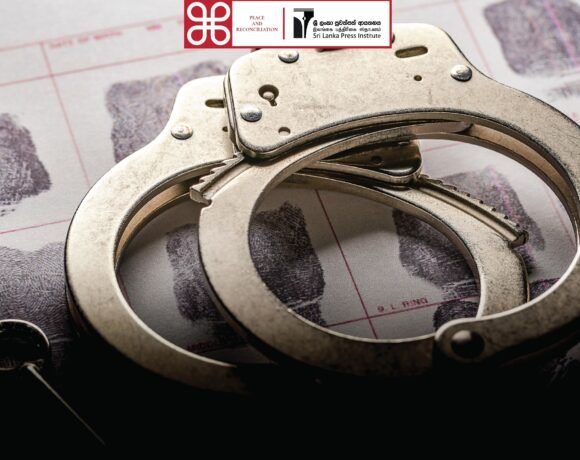
Between Development Plans: Sri Lanka’s Plantation Sector and Its Persistent Issues
Malliyappuchandi Thilakar
The definition of what constitutes Sri Lanka’s Upcountry is broad and vague. Officially, the census records the Upcountry Indian Tamils as being 4.8% of Sri Lanka’s population while the “unofficial” statistic suggests this to be 8%. They live in high density in some districts while in others their settlements are more scattered and isolated. They descend from workers brought to the island by the British in the 19th and early-20th centuries as plantation labour. In the present, the Upcountry Tamils are a community in transition, as its younger generation has begun to reasonably move over to a non-plantation labour identity.
For administration purposes, the Plantation Region has been defined by the Upcountry Development Authority Act (No. 32, 2018) as areas designated to cultivate economic crops such as tea, rubber, and oil palm in the Central, Uva, Sabaragamuwa, Western, Southern, and Northwestern Provinces. Within this definition, all plantation and non-plantation workers inherit the common identity of being members of the plantation community. Of the 1.5 million Tamils living in the Upcountry, about a million – or two-thirds of that population – fall within this category and live predominantly in line-rooms. They live below the poverty line in a situation where social infrastructure such as education, health, transport, and telecommunications are managed by plantation companies and, in part, by the state.
Historically, the plantation community was identified as “captive labourers” during the colonial period. Therefore, they were initially not included in the local government system (Gam Sabha and Pradeshiya Sabha system) in independent Sri Lanka. Revoking the citizenship it was granted by the British, the Sri Lankan state post-independence rendered this community stateless for a time period. As a result of suspended citizenship, the plantation community did not receive the free education available to all communities in the immediate post-independence decades. After a prolonged struggle, the community won back their citizenship. When the proportional representation system was introduced in 1978, the plantation community elected its representatives to the Parliament.
From 1977 to 1994, the political power of the plantation community was decisive in the United National Party-led government. During this time, their representatives shared responsibilities in the ministries of Rural Development, Tourism, Garment Industries, Transport and Hindu Culture. The Upcountry Tamil stamp was also noted in the fall of the UNP’s 17-year rule in 1994, and the victory of the Sri Lanka Freedom Party-led People’s Alliance. The Ministry of Plantation Infrastructure Development was established in 1996 as a unique ministry for this community, though, in 2006, it was merged with the Ministry of Nation-Building.
With the abolition of the Ministry of Plantation Infrastructure Development in 2006, a three-year project was planned to develop Upcountry infrastructure to include education, health, transportation, and poverty alleviation. The project was later extended to a ten-year timeline. This “Ten Year Plan”, set to be implemented from 2006 to 2015, was based on the promises made to the estate community by Mahinda Rajapaksa during the 2005 Presidential campaign, which were incorporated in the “Mahinda Chinthana Ten Year Programme” by the Department of National Planning for the period 2006-2015. Concurrently, the “Ten-year plan for Plantation Community Development” prepared by the Ministry of National Development was expanded with the approval of the Cabinet. The United Nations Development Program (UNDP) provided technical and financial assistance to develop this plan. Budget estimates for the period 2008-2009 were prepared, but the programme was later abandoned altogether. At the time, it was mentioned that both programmes would be implemented as a merger through the “Mahinda Chinthana Ten Year Programme”, but it was not to be the case.
With the change of government in 2015, the “Ten-year Plan” was revived. The Ministry of Plantation Infrastructure Development, which was abolished in 2006, was reorganized under the “100 Days Programme” as the Ministry of Plantation Infrastructure Development. It was later re-named the Ministry of Upcountry New Village Infrastructure and Community Development. The Ministry presented to the Cabinet a revised and redesigned plan to be implemented from 2016 to 2025 which was later shortened to a five-year plan (2016-2020). The UNDP provided technical and financial assistance to develop this plan. Although the five-year plan was partially implemented, it has since been abandoned with the 2019 change of government.
The United People’s Freedom Alliance (UPFA) government, which ruled from 2006 to 2015, returned to power in 2019 as the Sri Lanka People’s Front. However, the Ministry representing the plantation sector had been placed under the State Ministry of Estate Housing and Community Infrastructure, under Prime Minister Mahinda Rajapaksa. Considering that he was the President when the “Ten-year Plan” was first formulated in 2006, the need to bring back the abandoned Plantation Community Development Plan was urgently felt. The “Plantation Community Development Plan” had been formulated in 2006 under the “Mahinda Chinthana” to meet certain streamlined Millennium Development Goals (MDGs) under the Global Development Goals of the time. M. Vamadewan is a scholar with experience in the plantation sector. He served as the secretary to the Ministry in 2006 and as the advisor to the Minister in 2016. As an informed mediator between the political and civil society organizations of the community Vamadewan played an appreciable role.
“Vistas of Prosperity and Splendor (2020-2025)”, the National Policy Framework, as well as the policy statement of the prevailing government’s vision of a “Prosperous Tomorrow – Safe Country” also include the development needs of the plantation community. Similarly, the UN Human Rights Commission Review Report (UPR – UNHCR) in 2017 has also identified that the “Ten-year Plan” would be implemented from 2015 to 2025. As such, the “Ten Year Plan for Plantation Community Development” will likely be set in place over the next ten years, from 2021-2030. Although these development plans have been planned and implemented with varying degrees of success over decades, much work remains to be done in addressing social, cultural, and infrastructural issues of the Upcountry. The plantation community also faces challenges other imminent challenges in the social development level which includes natural disasters such as landslides, non-natural disasters such as house fire gutting, and epidemics like the Covid-19 crisis.
Post-Covid, sustainable development goals have been redesigned and there is an urgent need to revise the “Plantation Community Development Ten Year Plan” to align with such revisions. It is the duty and responsibility of all Upcountry communities and all authorities to move the community forward towards 2030 on the principles of sustainable development, bearing the slogan, “leave none behind”
மீளவும் புதுப்பிக்கப்பட வேண்டிய பெருந்தோட்ட சமூக அபிவிருத்திக்கான பத்தாண்டுத் திட்டம்
දස අවුරුදු ප්රජා සංවර්ධන සැලැස්ම සහ සැබෑ වතු කම්කරුවා








